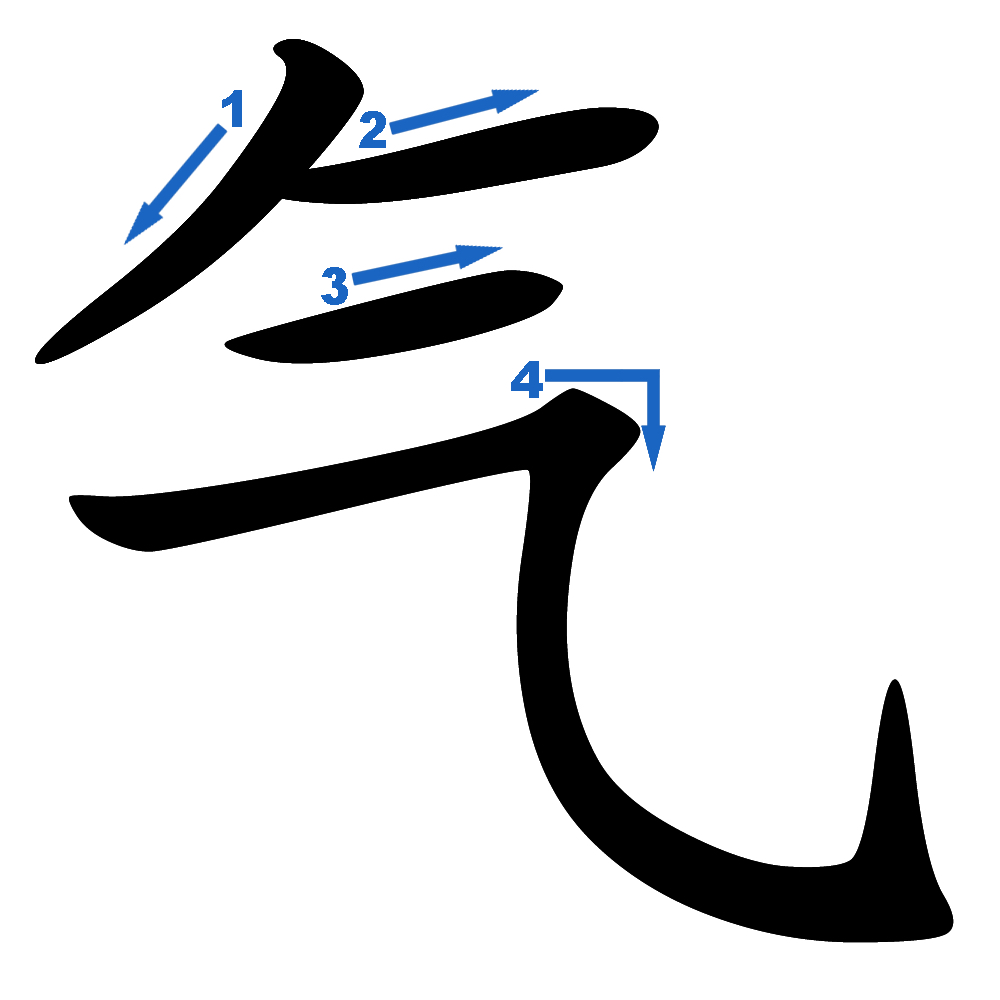

#Hanzi stroke order code
One more i've come across that uses the same data format as ZDT but which doesn't reveal license terms is worth mentioning, as the code is brief and easy to follow. If you would prefer to render the characters algorithmically, you may wish to explore some of the other branches, such as demo (check the lib sub-folder) and tools (which seems to be where recent developments are taking place). At present, the main things of interest on the master branch are the two data files graphics.txt and dictionary.txt and a complete collection of animated SVG's of the characters.
#Hanzi stroke order free
This data was extracted from two free chinese fonts using a semi-automated algorithmic approach. It contains stroke animations for 9507 characters (includes traditional chars). As of, it is also able to show radicals in different colors, based on data in make me a hanzi demo.Īnother great recent project is make me a hanzi demo. Update: Recently, the library has been made significantly smaller. It uses javascript to draw and animate the strokes, directly from json versions of the character path data. One is hanzi writer, which was based on the data for 3195 strokes contained in ZDT but now uses the more complete character data from make me a hanzi demo. The order helps learners write them fast and beautifully.There are some recent open source efforts that have opened this up a bit.

The principle of the stroke order is a guiding rule for writing Chinese characters. The middle stroke is written before the ones on both sides, and the upper stroke is written before the lower one. The left-falling stroke is written before the right-falling one, and the upper stroke is written before the lower one. The left stroke is written before the right one, and the horizontal is written before the vertical. The horizontal stroke is written before the vertical stroke and the upper stroke completed before the lower one. Sometimes two or more rules may be applied to the writing of a single character. What has been stated above is only a basic principle. Inside strokes should be completed before an enclosing stroke of a frame.Ī middle stroke should be written before stroke on both sides. Outer strokes should be written before inner ones. PrincipleĪ horizontal stroke should be written before a vertical one.Ī left falling should be written before a right falling.Īn upper stroke should be written before a lower one.Ī left component should be given before a right one. The following is a basic principle of the stroke order for writing Chinese characters. the vertical stroke can only be written from top to bottom, never from bottom to top. For example, the horizontal stroke should only go from left to right. The stroke can only be written in certain directions. The great majority of Chinese characters are formed by more than two strokes. There are about 20-30 types of strokes that Chinese characters are composed of. It is important to understand this point and get oneself familiar with strokes. One should be aware that in writing Chinese characters each stroke must go in a certain direction. Other types of strokes are derived from the strokes mentioned above, and thus known as the derived strokes. There are six basic strokes of Chinese characters, horizontal stroke, vertical stroke, left-falling stroke, right-falling stroke, dot and rising stroke.


 0 kommentar(er)
0 kommentar(er)
